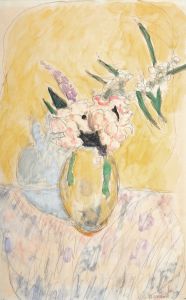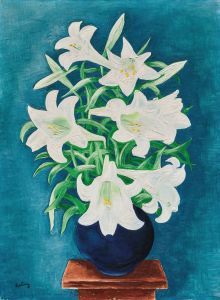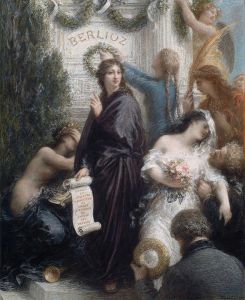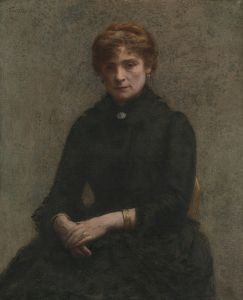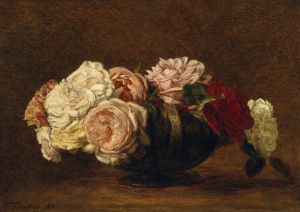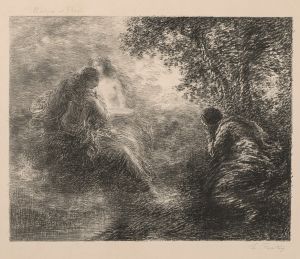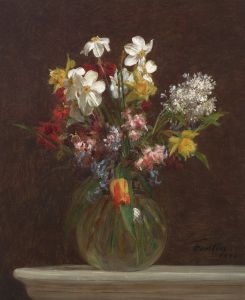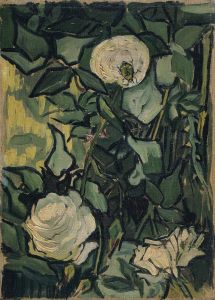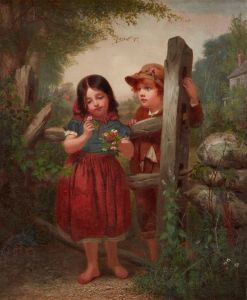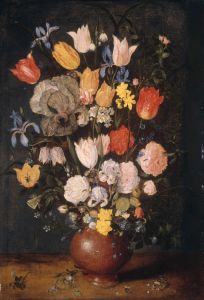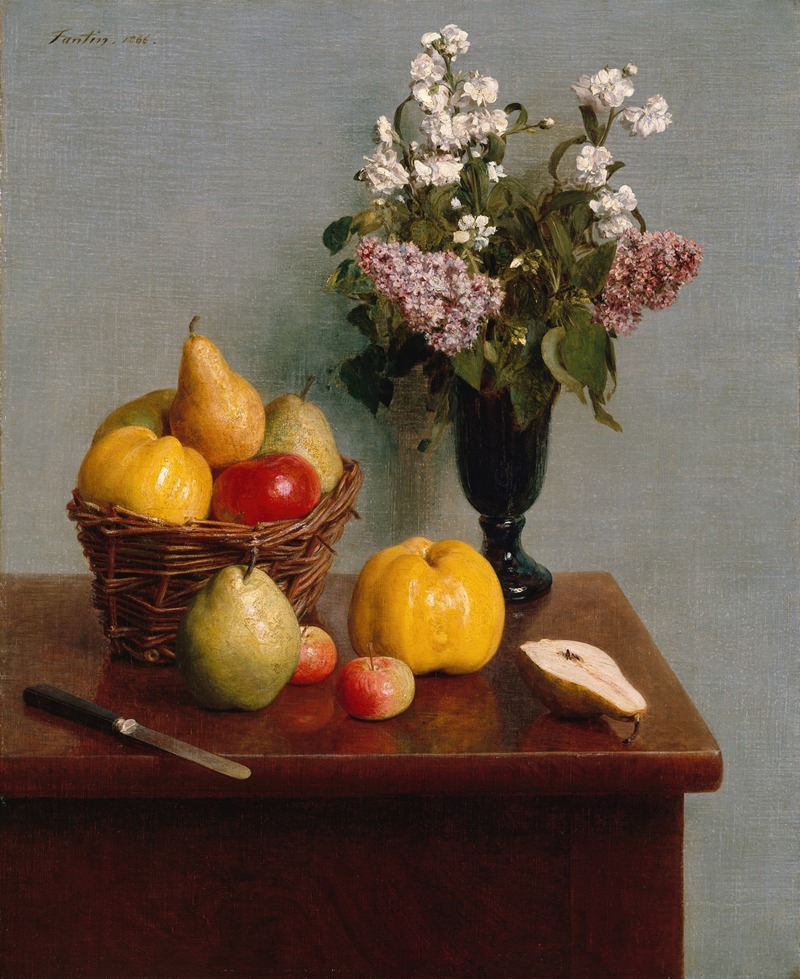
Still Life with Flowers and Fruit
A hand-painted replica of Henri Fantin-Latour’s masterpiece Still Life with Flowers and Fruit, meticulously crafted by professional artists to capture the true essence of the original. Each piece is created with museum-quality canvas and rare mineral pigments, carefully painted by experienced artists with delicate brushstrokes and rich, layered colors to perfectly recreate the texture of the original artwork. Unlike machine-printed reproductions, this hand-painted version brings the painting to life, infused with the artist’s emotions and skill in every stroke. Whether for personal collection or home decoration, it instantly elevates the artistic atmosphere of any space.
Henri Fantin-Latour was a renowned French painter known for his exquisite still life paintings and portraits. One of his notable works is "Still Life with Flowers and Fruit," which exemplifies his mastery in capturing the delicate interplay of light, color, and texture. Fantin-Latour was born in 1836 in Grenoble, France, and he developed an early interest in art, studying at the École des Beaux-Arts in Paris. He became associated with the Realist movement, although his work also shows influences from the Impressionists, with whom he was contemporaneous.
"Still Life with Flowers and Fruit" is a testament to Fantin-Latour's skill in still life painting, a genre that he pursued with dedication throughout his career. The painting typically features a meticulously arranged composition of various flowers and fruits, showcasing his attention to detail and his ability to render the subtleties of different textures. Fantin-Latour's still lifes are celebrated for their realism and the way they capture the transient beauty of natural objects.
In this painting, Fantin-Latour employs a rich palette to bring out the vibrancy of the flowers and the lushness of the fruit. His use of light is particularly noteworthy, as it highlights the delicate petals of the flowers and the smooth surfaces of the fruit, creating a sense of depth and realism. The background is often kept subdued, allowing the viewer to focus entirely on the arrangement itself.
Fantin-Latour's approach to still life was influenced by the Dutch masters of the 17th century, whose works he admired. He adopted their techniques of composition and lighting, yet he infused his paintings with a distinct sense of French elegance and refinement. His still lifes are not merely decorative; they invite contemplation and appreciation of the simple yet profound beauty found in everyday objects.
Throughout his career, Fantin-Latour received critical acclaim for his still life paintings. They were highly sought after by collectors and continue to be appreciated by art enthusiasts today. His works are housed in major museums around the world, including the Musée d'Orsay in Paris and the National Gallery in London.
Fantin-Latour's contribution to the art world extends beyond his still lifes. He was also known for his portraits and imaginative compositions, which often featured allegorical themes. However, it is his still life paintings, such as "Still Life with Flowers and Fruit," that remain among his most enduring and celebrated works.
In summary, "Still Life with Flowers and Fruit" by Henri Fantin-Latour is a remarkable example of 19th-century still life painting. It reflects the artist's keen observation, technical skill, and ability to convey the ephemeral beauty of nature. Fantin-Latour's work continues to be admired for its elegance and precision, securing his legacy as one of the foremost still life painters of his time.





